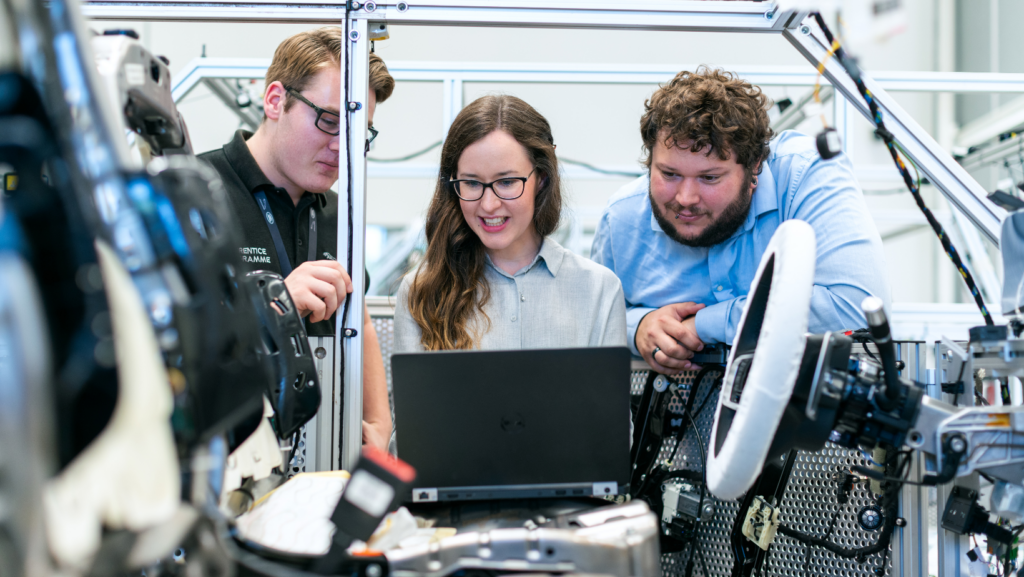
In a world where technology evolves at a breathtaking pace, it’s crucial to stay updated with the latest engineering advancements. These cutting-edge innovations are redefining boundaries, pushing the limits of what’s possible, and transforming the world as we know it.
Join us as we delve into the fascinating world of the newest engineering technology, exploring their potential impact and the opportunities they present. This journey promises to be as enlightening as it is exciting, so buckle up and get ready to be amazed.
Newest Engineering Technology
Impact on Various Industries

Technological advancements and innovative solutions define the engineering world today. This rapid progression isn’t slowing down; instead, it expands at breakneck speed with aspiring engineers and industries continually pushing their limitations. This section delves into the latest engineering technologies, giving careful attention to key innovations and their influences on various industries.
Such accelerated innovations transform multiple industries. For example, 3D printing finds immense potential in healthcare, paving the way for bioprinting tissues and organs. AI, on the other hand, revolutionizes the automotive industry, contributing significantly to autonomous driving technology.
EOR practices create waves in the energy industry, vastly improving oil production and optimizing resource utilization. Modular construction methods revolutionize the construction industry, streamlining building processes, reducing waste, and improving efficiency.
Advancements in Robotics and Automation
As the landscape of engineering technologies broadens and deepens, Robotics and Automation continue to revolutionize industries in significant ways. From precision in healthcare to efficiency in manufacturing, these advancements are truly a testament to engineering ingenuity.
Robotics in Healthcare

Healthcare, an essential industry, embodies a spectacular array of robotic advancements. Surgeons now employ Robotic-Assisted Surgery (RAS) for operations that demand superhuman precision. Systems such as Da Vinci Surgical System and Mako Robotic-Arm Assisted Surgery have redefined surgical procedures. For instance, Da Vinci systems completed more than 1.2 million surgeries globally in 2020.
Moreover, therapeutic robots like Paro Therapeutic Robot act as companions, minimizing the strain on healthcare workers. Progress in nanorobots, tiny machines designed for targeted drug delivery or microsurgery, too, is creating promising improvements.
Automation in Manufacturing
On the manufacturing front, automation has brought unprecedented efficiency and scalability. One stellar example of automation’s impact is in car manufacturing. Historically, car manufacturing was labor-intensive and time-consuming. With advancements like automated assembly lines and robotic welding, companies such as Tesla and Toyota have drastically cut down production time and enhanced quality control. Furthermore, Automated Guided Vehicles (AGVs) are drastically improving material handling and intralogistics, offering potential for further optimization in production processes. Utilization of advanced automation technologies like Machine Vision and AI-based predictive maintenance is laying a futuristic foundation for the industry.
The Role of Artificial Intelligence in Modern Engineering
AI in Design and Development

In the realm of design and development, AI’s implementable capabilities result in dynamic creations effortlessly. For instance, Generative Design, a tool often used in architectural blueprints and automotive design, relies on AI. Here, the user simply feeds the necessary constraints and performance parameters into the system.
AI, then, generates multiple design alternatives that meet these inputs. Autodesk’s Dreamcatcher and NVIDIA’s Clara Holoscan platform exemplify AI-driven generative design tools in today’s market. There’s a clear evolution beyond time-consuming, labor-intensive traditional design concepts to rapid, automated, and precise outcomes.
Machine Learning in Predictive Maintenance
Similarly, machine learning, a subset of AI, revolutionizes maintenance techniques in industrial settings. Predictive maintenance, for instance, uses machine learning algorithms to forecast equipment failure based on the pattern recognition of logged anomalies. This method prevents unexpected machinery breakdowns, avoiding expensive repairs, and lengthy downtime. Companies such as Siemens, for example, offer predictive maintenance software ReliaGear which predicts power failures using machine learning. Traditional maintenance schedules—often redundant or inefficient—see a shift towards condition-monitoring systems, thereby enhancing machine lifetime and operational efficiency.
From AI-Driven Automation to Green Energy Solutions
It’s clear that the newest engineering technology are reshaping industries from healthcare to manufacturing. They’re not just transforming the way we work but also how we approach sustainability. The rise of 3D printing, AI, and Robotics has brought about innovative systems like the Da Vinci Surgical System and Mako Robotic-Arm Assisted Surgery, revolutionizing healthcare. Green building materials and renewable energy solutions are making construction more sustainable.


